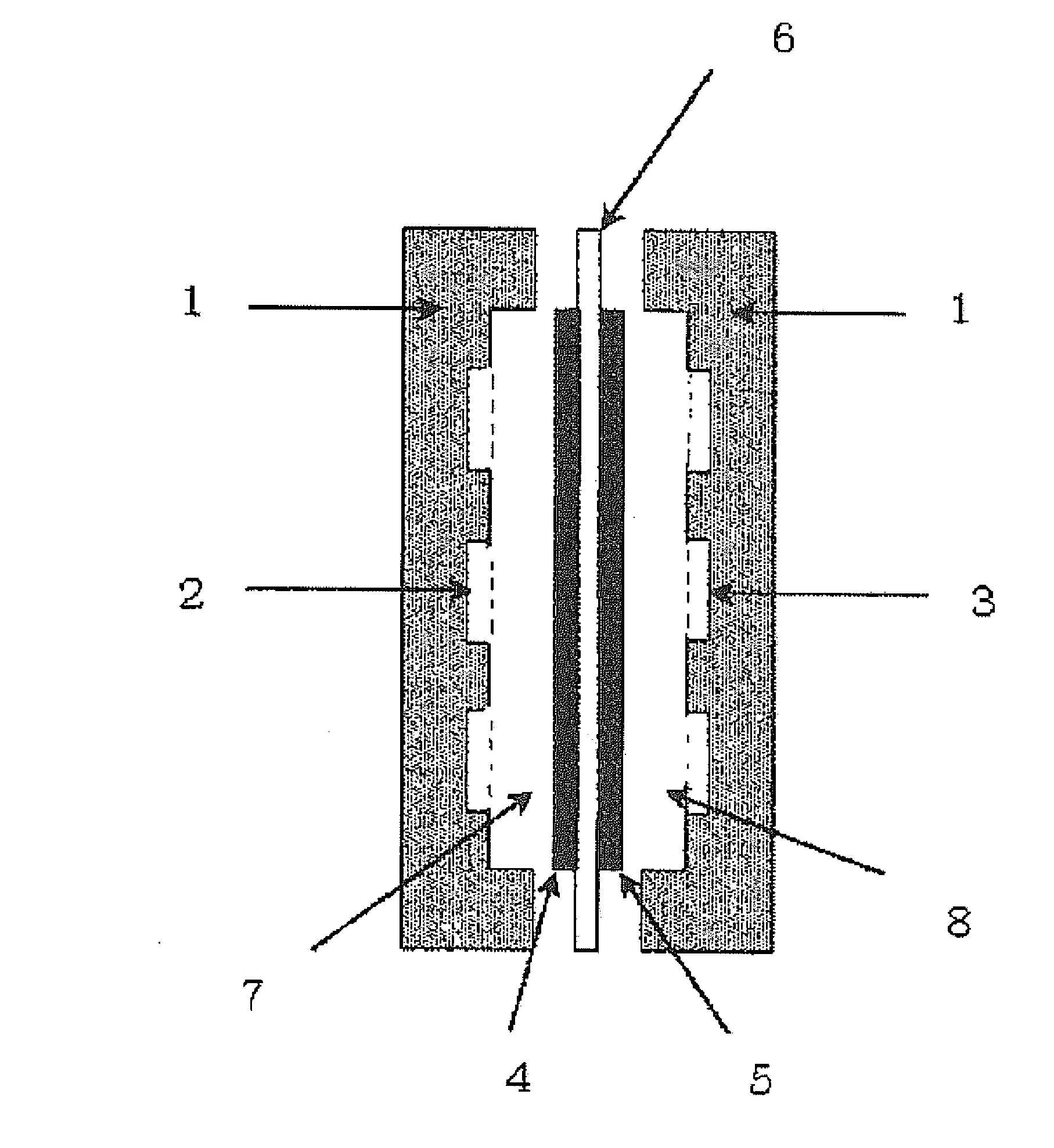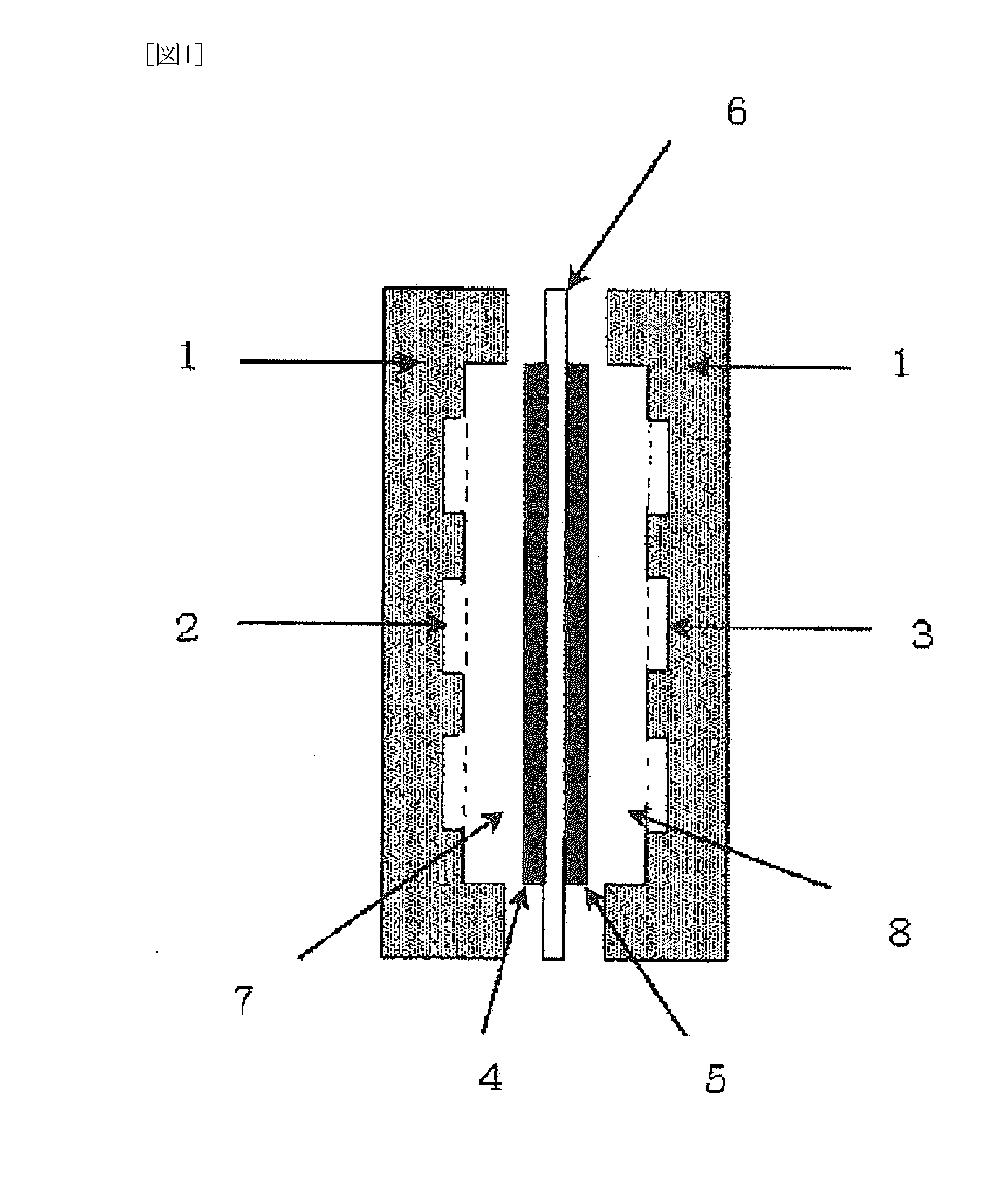Separation membrane for fuel cell
a fuel cell and separation membrane technology, applied in the field of separation membrane for fuel cells, can solve the problems of inability to use, low hydrolysis resistance, and high price of noble metal catalysts such as platinum, and achieve the effects of reducing the production cost of fuel cells, high hydrolysis resistance, and high outpu
- Summary
- Abstract
- Description
- Claims
- Application Information
AI Technical Summary
Benefits of technology
Problems solved by technology
Method used
Image
Examples
examples 4 to 6
[0116]Except for pretreating the porous film before filling of the hydrocarbon-based anion-exchange resin, a separation membrane for fuel cell was produced and evaluated as in Examples 1 to 3. The results are shown in Table 2. Note that the pretreatment was conducted by immersing the porous film in 1N aqueous solution of sodium hydroxide heated at 40° C. for 15 minutes after oxygen plasma treatment on the porous film. Also, the fuel cell output was evaluated with an increasing rate [{(Vm−Vr) / Vr}×100(%)] of the measured value (Vm) to the value (Vr) when using a porous film without pretreatment.
TABLE 1Fuel-cell outputExamplePorousWaterincreasing rate (%)No.membranepermeabilityat 0 (A / cm−2)at 0.1 (A / cm−2)4Example 1B18225Example 2C15196Example 3B17217Example 1B1920
example 7
[0117]The same polyamic acid solution as used in Comparative Example 1 was diluted by the same solvent to prepare 0.1 mass % of polyamic acid solution. Except that the above polyamic acid solution was absorbed into a dried precursor porous film followed by further drying before heating the precursor porous film, a fuel cell separation membrane was produced and evaluated as in Example 1. The results are shown in Table 2 Note that the absorbed amount of the polyamic acid solution was calculated based on the preliminarily measured surface area of the polyimide resin porous film produced in Example 1 on the assumption that 0.1 g / m2 of the polyamic acid was absorbed.
PUM
| Property | Measurement | Unit |
|---|---|---|
| thickness | aaaaa | aaaaa |
| thickness | aaaaa | aaaaa |
| thickness | aaaaa | aaaaa |
Abstract
Description
Claims
Application Information
 Login to View More
Login to View More - R&D
- Intellectual Property
- Life Sciences
- Materials
- Tech Scout
- Unparalleled Data Quality
- Higher Quality Content
- 60% Fewer Hallucinations
Browse by: Latest US Patents, China's latest patents, Technical Efficacy Thesaurus, Application Domain, Technology Topic, Popular Technical Reports.
© 2025 PatSnap. All rights reserved.Legal|Privacy policy|Modern Slavery Act Transparency Statement|Sitemap|About US| Contact US: help@patsnap.com



